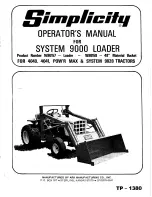
(3) British thermal unit (BTU) content/Degree API Gravity – Low American Petroleum Institute (API)
gravity fuels have a higher thermal energy content (BTU). As a general rule, there is a 3 to 5 per-
cent decrease in BTU content for every 10 degree increase in API gravity; there is no also a 0.7
degree API gravity increase with an increase in fuel temperature. This decrease in energy content
equates roughly to the same percentage of power loss. Use of fuels with higher API gravity will
cause higher than normal fuel consumption.
Recommend that the cetane number of diesel fuel be a minimum of 45 for engines that are
expected to operate at temperatures below 0°C [32°F] and a minimum of 42 for engines
that are operated at temperatures above 0°C [32°F].
The use of diesel fuel with a lower than recommended cetane number can cause hard
starting, instability, and excessive white smoke. To maintain satisfactory operation at low
ambient temperatures, it is important to specify diesel fuel of the collect cetane number.
Safety Requirements for the lubrication oil
The use of a high-quality Society of Automotive Engineers (SAE) 15W-40 heavy-duty engine oil is re-
quired such as Valvoline Premium Blue
TM
(USA) or Valvoline Premium Blue
®
Extra (International),
which meets or exceeds Cummins Engineering Standard (CES) 20081 and the American Petroleum In-
stitute (API) performance classification CJ-4.
To determine if the lubricating oil meets CES 20081, review the label on the back of the lubricating oil
bottle for the CES 20081 reference. If acquiring the lubricating oil in bulk, contact the supplier for the
lubricating oil specifications and confirm that the oil meets CES 20081.
Also located on the lubricating oil bottle is the API service symbol, which is shown in the accompanying
illustration. The upper half of the symbol displays the appropriate oil categories. The center section
identifies the SAE oil viscosity grade. The table below shows how the CES compares to the API classifi-
cation.
CES
API
Comments
CES-20081
CJ-4/SL
Minimum classification required
CK-4 should be applied to satisfy 1000/800 hours of oil and oil/fuel filter change interval.
Safety Requirements for the additives
New Engine Break-in Oils
Special break-in engine lubricating oils are not recommended for new or rebuilt engines.
Use the same type of oil during the break-in period as is to be used in normal operation.
AfterMarket Oil Additive Usage
The use of aftermarket oil additives is not recommended. Present high-quality fully additive
engine lubricating oils are very sophisticated, with precise amounts of additives blended
into the lubricating oil to meet stringent requirements. These oils meet performance char-
acteristics that conform to the lubricant industry standards. Aftermarket lubricating oil ad-
ditives are not necessary to enhance engine oil performance, and in some cases, can re-
duce the finished oil's ability to protect the engine.
1-26
Summary of Contents for HL930A
Page 1: ...WHEEL LOADER OPERATION MAINTENANCE MANUAL HL930A HL930A XT Serial No ...
Page 2: ......
Page 4: ......
Page 25: ...1 CALIFORNIA PROPOSITION 65 SAFETY HINTS 1 1 ...
Page 133: ...13 REAR CAMERA option 1 The rear camera is available as a option Refer to page 3 39 3 75 ...
Page 147: ...15 CAMERA MONITOR OPTION 3 89 ...
Page 149: ... 2 Interlocked with other devices 3 91 ...
Page 150: ... 3 Operation scenario Single camera mode 3 92 ...
Page 151: ... 4 Operation scenario AAVM mode 3 93 ...
Page 152: ... 5 AAVM view mode type 3 94 ...
Page 153: ... 6 Function menu tree Single cam mode 3 95 ...
Page 154: ... 7 Function menu tree AAVM mode 3 96 ...
Page 155: ... 8 Parking guide line adjust 3 97 ...
Page 156: ... 9 How to set function menu 3 98 ...
Page 157: ... 10 Composition of menu screen 3 99 ...
Page 158: ... 11 Value adjustment 3 100 ...
Page 159: ... 12 When radar mounted monitor display 3 101 ...
Page 160: ......
Page 260: ...9 2 ...
Page 261: ......
Page 262: ...EN English E1 September 2020 PART NO 91WA 32040 ...







































